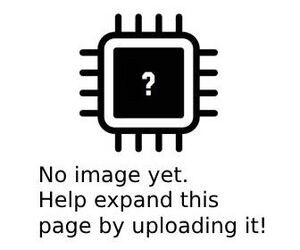More actions
| MacBook Air A2179 Not turning on, missing P5VG3S EN repair | |
|---|---|
| Device | MacBook Air A2179 |
| Affects part(s) | Motherboard |
| Needs equipment | multimeter, soldering iron, soldering station, thermal camera |
| Difficulty | ◉◉◉◌ Hard |
| Type | Soldering |
This article is a stub. You can help Repair Wiki grow by expanding it
Problem description
When the 820-01958 board is not turning on and P5VG3S_EN signal is missing, it might be a dead or corrupted T2 chip.

Symptoms
- MacBook not turning on
- P5VG3S_EN signal is low or missing
Solution
Diagnostic Steps
Check for DFU or Recovery Mode
- Connect the MacBook Pro A2337 to another Mac or MacBook via the master port (bottom left side USB-C port).
- Use Apple Configurator 2 to verify whether the device is in DFU or recovery mode.
- If the device is in DFU mode, proceed to "Device stuck in DFU mode due to corrupt firmware" in the repair steps below.
Check output voltages of U7800
- The output voltages for U7800 are
- PP1v8_SLPS2R - Normal voltage ~1.8v
- PP1v1_SLPS2R - Normal voltage ~1.1v
- PP0v9_SLPDDR - Normal voltage ~ 0.9v
- PPVDDCPU_AWAKE ~ Normal voltage ~ 1.06v
- PP0v82_SLPDDR ~ Normal voltage ~ 0.82v
- If any of those is missing, see "U7800 output voltage missing" in repair steps below.
- If all of them are present, see "All voltages present" in repair steps below.
Repair Steps
Device stuck in DFU mode due to corrupt T2 firmware
- Revive T2 firmware via Apple Configurator 2.
- Ensure the MacBook is running the latest macOS version!
- Follow the provided Apple support article for the procedure.
- Once plugged in, open Apple Configurator 2. You should see a big square icon pop up that says "DFU" or rarely, "RECOVERY". Click the icon, Navigate to the top menu bar click "Actions" then "Advanced". Select Revive device. You will see a progress bar appear. This process can take over 30 minutes in some cases as Apple Configurator 2 now reinstalls the OS in addition to the M1's firmware. Data will still be retained with the revive option.
- Be cautious that selecting "Restore" will wipe all user data.
U7800 Output voltage missing without a short to ground
If any of the above rails is missing, U7800 may be bad, the rail may be shorted, or the T2 may not be communicating with U7800. Many of these rails have very low resistance to ground as they power the CPU portion of the T2. Do not assume you have a short until you have compared it to a known good board. Many of these rails will read 50-100 Ω to ground. PP1v8_SLPS2R is an exception, with its resistance normally being well within kilo-ohms.
A missing SLP or AWAKE voltage listed above without a short to ground (Less than 10 ohms usually), with P5VG3S_EN missing is suggestive of an issue with U7800.
U7800 Output voltage missing with a short to ground
Unfortunately, many times when a SLP or AWAKE voltage is shorted to ground, it will be due to a failed T2 chip, which would render the board beyond repair, however in some cases, a capacitor, or U7800 itself will be the cause of the short circuit.
Use short detection strategies to find the short circuit and replace the shorted component. Do not inject a higher voltage than the line creates. Example: Do not inject higher than 0.82v on PP0v82_SLPDDR
All voltages present
If all SLP and AWAKE voltages are present at their normal voltages, the T2 may not be communicating properly with U7800. Attempt to force the device into DFU mode to reflash the T2's firmware.
STOP! Before you begin, is your Mac on the LATEST VERSION of MacOs? If not, update your system before proceeding. Forcing a MacBook into DFU mode, and attempting to restore BridgeOs firmware on a old version of MacOs may result in a bricked device.
If the device fails the firmware revive or restore, the T2 chip or U7800 may be the cause of the failure.
If all SLP and AWAKE voltages are present, and a DFU revive fails, replace U7800 empirically. If the problem persists after replacing U7800, the T2 chip is the likely cause of the fault, and a diagnosis of a failed T2 chip can be made.
